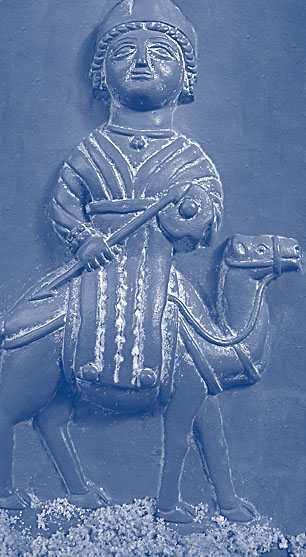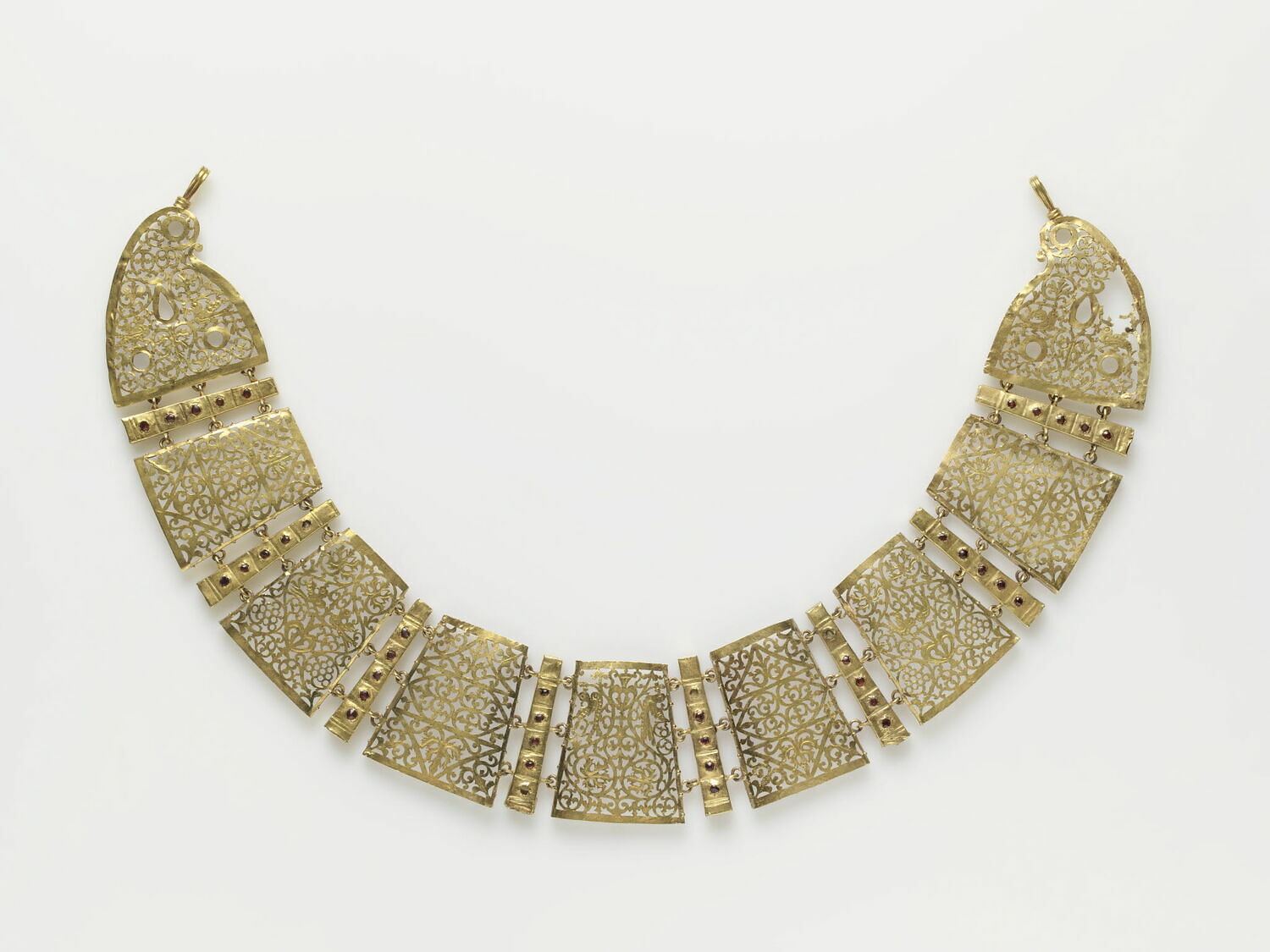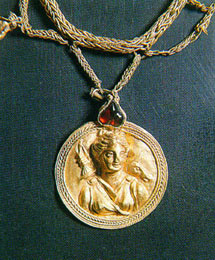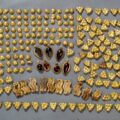Small gold figurines, deity-shaped pendants, often are described as part of a larger necklace, served as amulets.
The figurine from Greco-Roman Egypt is 3.56 cm high and weights 1.79 g. It was made of a thick sheet of gold with the repousse technique. [Fig. 1]
The identification of the goddess is ambiguous, she is described as Hecate, Demeter or Isis.
In the collection of the MFA Boston is the amulet with figures of Demeter, Harpokrates/Triptolemos, and Persephone. [Fig. 2]
This pendant was purchased from the art market, but it is thought to be made in Egypt 3rd century.
Like the Louvre pendant is small, 3.1 cm high, it has loops at the back, and was made in the same technique.
From the museum description:
“At the left stands Demeter, goddess of grain, as shown in Egypt, with a tall torch and a veiled head surmounted by a grain basket. At the right is her daughter Persephone, queen of the Underworld, holding a scepter and with two ears of grain emerging from her head. Between them is an adolescent wearing the cloak of Greek travelers and soldiers (chlamys) and the crown of Upper and Lower Egypt. The crown marks the youth as the Egyptian god Harpokrates, son of Isis and Osiris/Serapis. The cloak, however, identifies the youth with the Greek hero Triptolemos, who was sent by Demeter to teach agriculture to the world.”




Terracotta figurine of goddess Demeter / Isis; Hellenistic Egypt.
As Isis in polo headdress with Isiac crown, as Demeter – holding a burning torch, an ear of wheat.
In Louvre https://www.photo.rmn.fr/archive/19-529243-2C6NU0AXMR4V3.html











